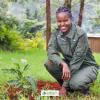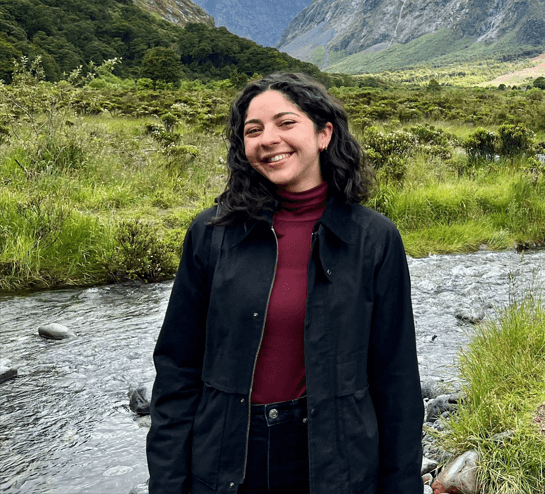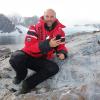There are educators everywhere working to teach the next generation of sustainability minded students. Whether in formal settings (K-12, undergraduate, graduate) settings or informally as science communication now it is more important than ever to work towards advancing Conservation Tech education.
The United Nations released the 17 Sustainable Development Goals (SDGs) which have served as a framework for educators in this space. Educating with a sustainable focus is a challenge whether you are interested in engineering, public policy, AI, or behavioral biology and we hope that this group will help you grow and exchange your ideas with other current and future educators.
This WILDLABS group has been set up by folks who are working to develop education toolkits, platforms, modules, and more in the conservation space. These tools can be at any level of development.
We hope you will become part of this group to share case studies, exchange ideas, and work towards developing a curriculum for future conservation tool crafters.
Current Examples of Conservation Tech Education Resources:
CV4Ecology Summer Workshop:
- Website for Summer Camp Information,
- Applications Due December 15th for next cohort
- 2022 Material including Syllabus, Lectures, Invited Talks, Final Presentations
Tech Tutors from WILDLABS
- TechTutors Season 1, WILDLABS
- TechTutors Season 2, WILDLABS
- TechTutors Season 3, WILDLABS
Want to know more about Conservation Technology education resources? Make sure to join the conversation in the WILDLABS Conservation Tech Training and Education group.
Additional Conservation Tech Courses:
- Tech4Wildlife @ Georgia Tech – Interdisciplinary and Project Based course on Conservation Technology
- MSc Wildlife Conservation Tech – Liverpool John Moores University Program
Group curators
- @StreamingScience
- | he/him/his
Georgia Institute of Technology
Andrew’s always looking to find new interdisciplinary teams in the conservation tech space. He is a postdoctoral researcher at Max Planck Institute, who completed his PhD at Georgia Tech in 2022. His interests including conservation tech education and engineering work.



- 0 Resources
- 14 Discussions
- 3 Groups
- @sstathat
- | she/her
Suzanne’s drive to protect the natural world led her to graduate school at Caltech. She is a Computing and Mathematical Sciences PhD student, advised by Pietro Perona. Her interests include leveraging machine learning and computer vision techniques to solve ecological problems.



- 0 Resources
- 3 Discussions
- 7 Groups
- @cshriver
- | she/her/hers
Georgia Institute of Technology
PhD student in Quantitative Biosciences
- 0 Resources
- 0 Discussions
- 3 Groups
- @CathyNj
- | She
Catherine Njore is a seasoned Cartographer with over 17yrs experience and specializing in children cartography. She recently designed a Cartography: Fun with Maps Program(CFMP); a program that assists children to learn how to draw, read and use maps effectively.
- 1 Resources
- 8 Discussions
- 6 Groups
- @serena.le
- | she/her
Conservation tech enthusiast
- 0 Resources
- 0 Discussions
- 9 Groups
- @Pepyanyabuma
- | she
Conservationist/ecologist
- 0 Resources
- 0 Discussions
- 4 Groups
Data Science | Remote Sensing | GIS | Geospatial Cloud Computing | Big Data
- 0 Resources
- 0 Discussions
- 4 Groups
- @kimschoedler
- | She/Her
Experienced wildlife educator and caretaker with an interest in exploring tech-related career options in conservation and wildlife preservation.
- 0 Resources
- 0 Discussions
- 1 Groups
- @NicoLaur
- | He/Him
PhD Student in Disease Ecology, Taxonomy and biomonitoring in Central Africa
- 0 Resources
- 0 Discussions
- 7 Groups
- 0 Resources
- 0 Discussions
- 4 Groups
- @ttopa
- | He/Him
Recent Environmental Science and Data Science graduate looking to learn more about the conservation tech world. www.TeodoroTopa.com
- 0 Resources
- 0 Discussions
- 6 Groups
Sustainability Manager for CERES Tag LTD. An animal health company; animal monitoring, conservation, & anti-poaching/ rural crime. Wildlife, livestock, equine & companion. #CeresTrace #CeresWild #CeresRanch




- 2 Resources
- 19 Discussions
- 24 Groups
- @AnnabelL
- | she/her
- 0 Resources
- 0 Discussions
- 10 Groups


- 0 Resources
- 18 Discussions
- 18 Groups
Wildlife conservation enthusiast, looking to gain more experience & knowledge
- 0 Resources
- 0 Discussions
- 4 Groups
April 2024
event
May 2024
July 2024
event
October 2024
April 2024
March 2024
event
event
Involve our young learners in climate change action.
27 March 2024 3:24pm
Camera Trap storage and analyzing tools
16 April 2024 5:15pm
16 April 2024 7:17pm
I don't have an easy solution or a specific recommendation, but I try to track all the systems that do at least one of those things here:
https://agentmorris.github.io/camera-trap-ml-survey/#camera-trap-systems-using-ml
That's a list of camera trap analysis / data management systems that use AI in some way, but in practice, just about every system available now uses AI in some way, so it's a de facto list of tools you might want to at least browse.
AFAIK there are very few tools that are all of (1) a data management system, (2) an image review platform, and (3) an offline tool. If "no Internet access" still allows for access to a local network (e.g. WiFi within the ranger station), Camelot is a good starting point; it's designed to have an image database running on a local network. TRAPPER has a lot of the same properties, and @ptynecki (who works on TRAPPER) is active here on WILDLABS.
Ease of use is in the eye of the beholder, but I think what you'll find is that any system that has to actually deal with shared storage will require IT expertise to configure, but systems like Camelot and TRAPPER should be very easy to use from the perspective of the typical users who are storing and reviewing images every day.
Let us know what you decide!
17 April 2024 1:55am
Can't beat Dan's list!
I would just add that if you're interested in broader protected area management, platforms like EarthRanger and SMART are amazing, and can integrate with camera-trapping (amongst other) platforms.
Lotek Telemetry Talks Presents: Tagging Owls – Tips & Tricks from the Experts
16 April 2024 8:26pm
InConversation: Starting a Conservation Technology Career with Vainess Laizer
 Esther Githinji
Esther Githinji
16 April 2024 1:34pm
Seeking Knowledge/Resources about Soil Monitoring
10 April 2024 9:53pm
12 April 2024 2:32pm
Hi Frida.
We are currently doing soil monitoring for ecological restoration in Australia with an organization called Bush Heritage Australia. It's been ongoing for about four years and it's in collaboration with BHA and also Monash University's soil science department. There's more info about the project here:
14 April 2024 12:21am
Hi! If you wouldn't mind, would we be able to exchange emails and connect? I'd love to have a short discussion and get some feedback regarding my senior project
14 April 2024 1:50pm
Sounds good. Just sent you a private message.
Conservation Science Intern - Space for Giants, Nanyuki
9 April 2024 8:55am
WILDLABS AWARDS 2024 - Fostering bat conservation and citizen science in Zimbabwe: Establishing bat groups and training individuals to use bat detectors
4 April 2024 12:12pm
4 April 2024 7:44pm
Awesome project!!
My own curiosity here - how many different bat species are there in Zimbabwe?
8 April 2024 9:29am
Thank you Carly!
We have over 60 bats recorded in Zimbabwe
WILDLABS AWARDS 2024 - Underwater Passive Acoustic Monitoring (UPAM) for threatened Andean water frogs
30 March 2024 3:54pm
2 April 2024 2:35pm
Thanks @carlybatist for your suggestions! In deed we are looking for open code/free access alternatives for automated species recognition
5 April 2024 12:13pm
Congratulations, very exciting! Keep us updated!
7 April 2024 6:09pm
This is so cool @Mauricio_Akmentins - congrats and look forward to seeing your project evolve!
Blind Spots in Conservation Tech Management in Remote Landscapes: Seeking Your Input
20 March 2024 10:51am
22 March 2024 9:48am
Hi @lucianofoglia
Thanks for sharing your thoughts with the community. What you've touched on resonates with a number of users and developers (looking at you @Rob_Appleby) who share similar concerns and are keen to address these issues.
As a beliver in open sourcing conservation technologies, to mitigate issues you've noted (maintenance of technologies / solutions, repairability, technical assistance to name but a few), really the only way to achieve this in my eyes is through the promotion of openness to enable a wide range of both technical and non-technical users to form the pool of skills needed to react to what you have stated. If they can repair a device, or modify it easily, we can solve the waste issue and promote reusability, but first they need access to achieve this and commerical companies typically shy away from releasing designs to protect against their IP that they keep in house to sell devices / solutions.
I would think for an organisation to achieve the same the community would need to help manufacturers and developers open and share hardware designs, software, repairability guides etc, but the reality today is as you have described.
One interesting conversation is around a kitemark, i.e a stamp of approval similar to the Open Source Hardware Association's OSHWA Certification), but as it's not always hardware related, the kitemark could cover repairability (making enclosure designs open access, or levels of openness to start to address the issue). Have a look at https://certification.oshwa.org/ for more info. I spent some time discussing an Open IoT Kitemark with http://www.designswarm.com/ back in 2020 with similar values as you have described - https://iot.london/openiot/
You may want to talk more about this at the upcoming Conservation Optimism Summit too.
Happy to join you on your journey :)
Alasdair (Arribada)
30 March 2024 3:57pm
Hi @Alasdair
Great to hear from you! Thanks for the comment and for those very useful links (very interesting). And for letting @Rob_Appleby know. I can't wait to hear from her.
Open source is my preference as well. And it's a good idea. But, already developing the tech in house is a step ahead from what would be the basic functional application of an organization that could manage the tech for a whole country/region.
I have witnessed sometime how tech have not added much to the efficiency of local teams but instead being an tool to promote the work of NGOs. And because of that then innovative technologies are not developed much further that a mere donation (from the local team's perspective). But for that tech to prove efficient, a lot more work on the field have to be done after. The help of people with expertise in the front line with lots of time to dedicate to the cause is essential (this proves too expensive for local NGOs and rarely this aspect is consider).
I imagine this is something that needs to come from the side closer to the donors and International NGOs. Ideally only equipment can be lend within a subscription model and not just donated without accountability on how that tech is use. Effectively the resources can be distributed strategically over many projects. Allowing to tech to be repurposed.
Sorry that I step down the technical talk, the thing is that sometimes the simplest things can make the most impact.
It would be good to know if any in the community that have spent considerable time working in conservation in remote regions, and have observed similar trends.
Thanks! Luciano
CV4E 2025 application deadline extended
29 March 2024 6:28am
Applying Open-Source AI to Camera Trap Imagery
27 March 2024 4:34pm
AI for Conservation!
4 March 2024 8:51pm
22 March 2024 12:29pm
Welcome, Have you considered participating in any of the AI for Good challenges. I find it is good way to build a nice portfolio of work. Also contributing to existing open source ML projects such as megadetector or to upstream libraries such as PyTorch is good way to getting hired.
22 March 2024 5:57pm
Thank you for the tip! I'll definitely consider contributing to open source projects and taking part in challenges :)
25 March 2024 5:22am
We could always use more contributors in open source projects. In most open source companies Red Hat, Anaconda, Red Hat and Mozilla, people often ended up getting hired largely due to their contributions on open source projects. These contributions were both technical such as writing computer code and non-technical such as writing documentation and translating tools in their local language.
Recording Orthoptera Sounds: International Workshop (Italy)
22 March 2024 9:25pm
Introduction + Mentorship/Research Partnership
20 March 2024 1:41am
20 March 2024 2:14pm
Me and @Hubertszcz are working on biodiversity monitoring for habitat restoration on the Azuero penninsula in August. I don't have any like paid research opportunities i know of myself, but if you find yourself in panama, im sure they can use help!
22 March 2024 2:28pm
I actually will be in Panama for an internship during June-July in the Azuero peninsula!! What organization are you both involved in?
Leveraging Actuarial Skills for Conservation Impact
15 March 2024 12:31pm
19 March 2024 6:35pm
Thank you for your response Akiba. I will have a look. 👏🏻
19 March 2024 7:52pm
I would look into the TNFD (Taskforce on Nature-Related Disclosures), Finance for Biodiversity, Accounting for Nature, etc. which are all focusing on how to incorporate nature risk into corporate reporting and sustainability frameworks!
20 March 2024 3:48pm
Thank you Carly, I will definitely take a look.
Here's what you missed at World Wildlife Day 2024
7 March 2024 9:02pm
15 March 2024 2:42pm
A PHD POSITION AT NOTTINGHAM TRENT UNIVERSITY
27 February 2024 9:42am
SMART Partnership Director
21 February 2024 4:32pm
Exploring an ethical reflection tool for animal-focused tech (Survey)
13 February 2024 8:22pm
Computer Vision for Ecology Workshop 2025 Call for Applications
12 February 2024 9:29pm
Bio-Logging Science Symposium
9 February 2024 3:59pm
Southern African Wildlife Management Association Conference 2024
6 February 2024 12:20pm
Conservation Technology for Human-Wildlife Conflict in Non-Protected Areas: Advice on Generating Evidence
22 January 2024 11:36pm
23 January 2024 1:54pm
This is an area where my system would do very well in:
Also, as you mention areas dominated by humans, there is a high likelyhood that there will be enough power there to support this system, which provides very high performance and flexibility but it comes with a power and somewhat a cost cost.
Additionally, it's life blood comes with generating alerts and making security and evidence gathering practical and manageable, with it's flexible state management system.
Ping me offline if you would like to have a look at the system.
4 February 2024 8:16am
Hi Amit,
The most important thing is that the livestock owners contact you as soon as possible after finding the carcass. We commonly do two things if they contact us on the same day or just after the livestock was killed:
- Use CyberTracker (or similar software) on an Android smart phone to record all tracks, bite marks, feeding pattern and any other relevant signs of the reason for the loss with pictures and GPS coordinates. [BTW, Compensation is a big issue -- What do you do if the livestock was stolen? What do you do if a domestic animal killed the livestock? What if it died from disease or natural causes and was scavenged upon by carnivores afterwards?]
- In the case of most cats, they would hide the prey (or just mark it by covering it with grass or branches and urinating in the area). In this case you can put up a camera trap on the carcass to capture the animal when it returns to its kill (Reconyx is good if you can afford it - we use mostly Cuddeback with white flash). This will normally only work if the carcass is fresh (so other predators would not be able to smell it and not know where it is yet), so the camera only has to be up for 3-5 days max.
This is not really high-tech, but can be very useful to not only establish which predator was responsible (or if a predator was responsible), but also to record all the evidence for that.
Let's save our environment
31 January 2024 12:52pm
Remote Sensing and Research group at Dedan Kimathi University have come up with this ebook after a project observing the deterioration of part of the aberdare.
I always welcome efforts that involve young learners so that they benefit and participate. Thank you RSRG Team.
Project Planning for Wildlife Conservation
30 January 2024 3:13pm
How are Outdoor Fire Detection Systems Adapted for Small Forest Areas, Considering the Predominance of Indoor Fire Detectors?
8 January 2024 4:27pm
22 January 2024 6:35pm
Fire detection is a sort of broad idea. Usually people detect the products of fire, and most often this is smoke.
Many home fire detectors in the US use a radioactive source and measure the absorption of the radiation by the air. More smoke means more absorption.
For outdoor fire detection, PM2.5 can be a very good smoke proxy, and outdoor PM2.5 sensing is pretty accessible.
This one is very popular in my area.
Ignite Labs: Space for Nature & Biodiversity Series
21 January 2024 2:46pm
Kenya Forest Club, Central Region – Kenya Forest Club
20 January 2024 2:53pm
It has been an exciting challenge as a member of Kenya Forest Club whose main aim is solving climate change challenges through early childhood education and training, with a particular interest in forestry.
The club hopes to have members in all schools and setup of tree nurseries
Free Spatial Analysis Course: Going Places with Spatial Analysis
15 January 2024 9:42am
Information to the young who are the future
8 January 2024 4:35pm
12 January 2024 11:48am
Great work @CathyNj kindly check out the below opportunity. I reckon you may find it useful for your work.
"Join Planet Ed and The Nature Conservancy for the Planet Media Call for Pitches to Shape the Future of Climate Education for Kids!"
13 January 2024 4:08pm










































5 April 2024 4:01pm
Hi Cathy
I can't help personally but on seeing your post reached out to a contact who's previously been involved in the British Cartographic Society in case they had any ideas. Their advice:
"I would suggest that she becomes a member of British Cartographic Society (£45 or so) and then writes for/becomes an editor. Then, she will be able to apply for a funding budget for travel... as long as she also writes about the conference! It's a bit long winded, but I am sure that just being an Editor would be an advantage to her anyway."
I hope that helps (or that you find an easier way to get to the conference :D ) - good luck!
Here's their website -